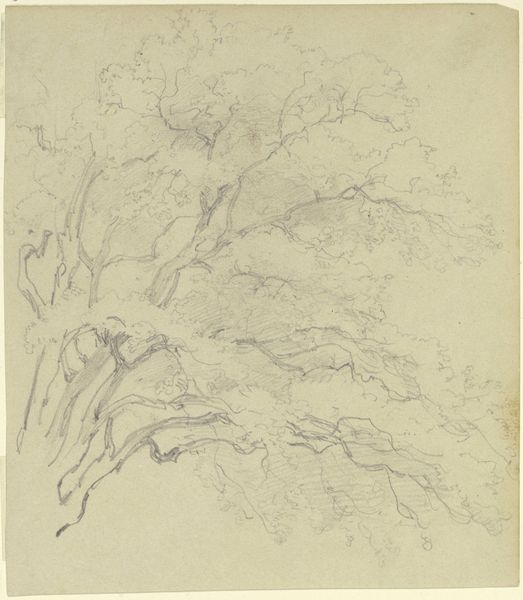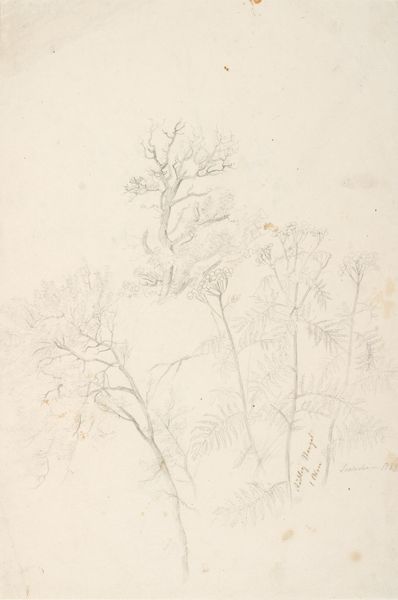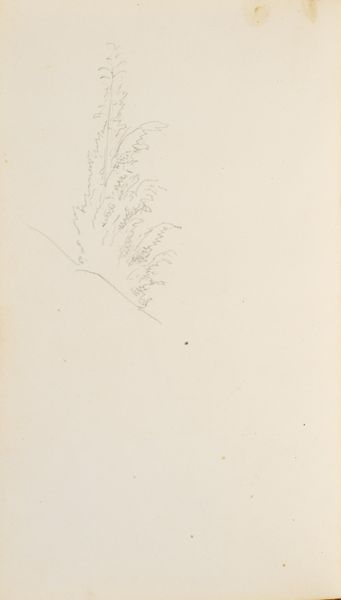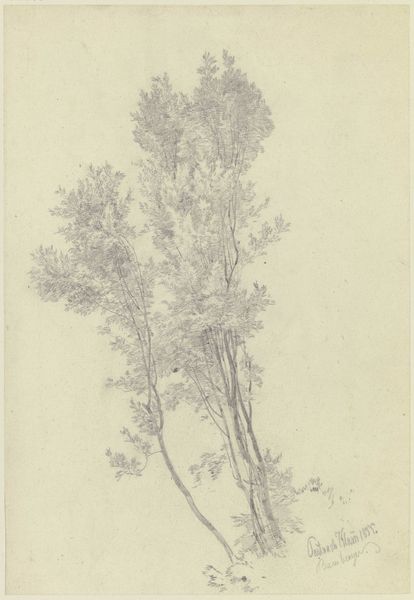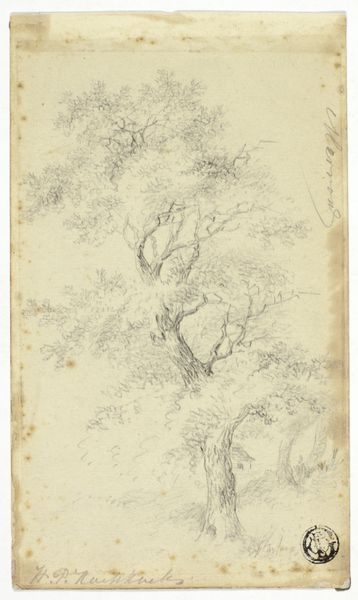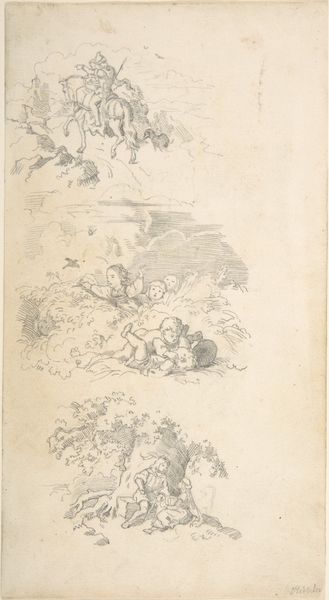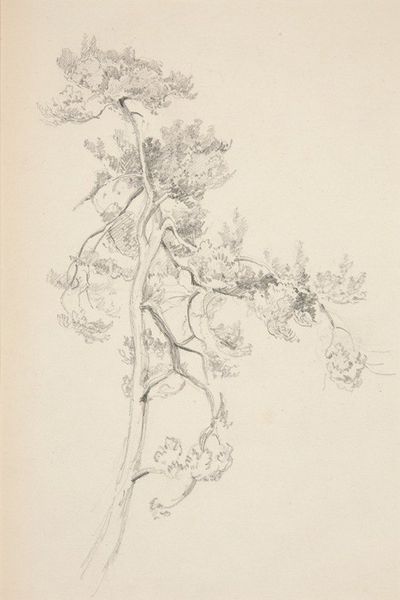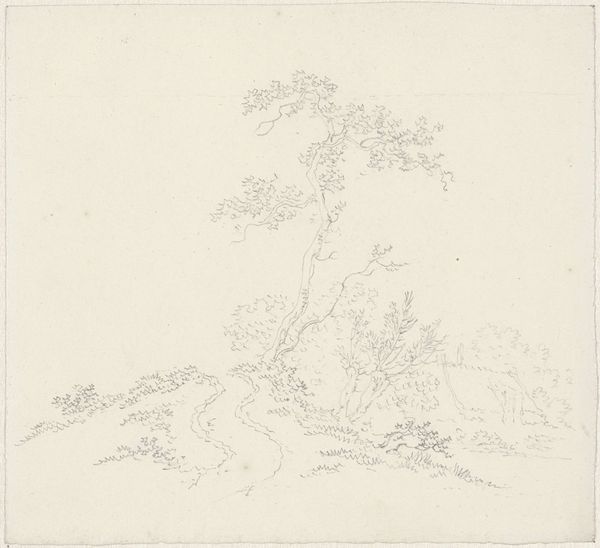
drawing, paper, pencil
#
drawing
#
pencil sketch
#
landscape
#
paper
#
pencil
#
line
Copyright: Public Domain: Artvee
Editor: Here we have, "Sketches of Myrtle and a Head Crowned with Myrtle," a pencil drawing on paper, potentially by Edward Burne-Jones. It’s delicate; almost ephemeral with all these lines. What stands out to you when you look at this piece? Curator: Immediately, I'm drawn to the physical process. Pencil on paper seems almost antithetical to the labor-intensive practices often associated with "high art" of Burne-Jones's period. It asks us to consider the artistic process not just as an intellectual endeavor but also a material one, linked to the availability and cost of resources. Think about paper production at that time, the societal implications of a readily available and relatively cheap medium like pencil and paper enabling artistic creation at all levels of society. Editor: So you're saying the very materials used challenge the traditional hierarchy within art itself? Curator: Precisely. It prompts questions about skill versus labor. Was sketching viewed differently from painting because it was perceived as less technically demanding? The apparent ease of the medium hides the technical skill of the artist, and invites an examination of the commercial art market pressures, how the demands for particular types of imagery shapes production. Editor: That makes me think, how does Burne-Jones’s choice to render foliage in such detail influence our understanding of his artistic intentions and process? Was it simply practice, or did it serve a broader symbolic purpose relating to his interest in mythology? Curator: That's a great observation! The level of detail pushes beyond mere observation. The meticulous rendering suggests a deliberate focus on botanical forms, tying his work into larger movements focusing on nature. Burne-Jones is often placed within Pre-Raphaelitism but perhaps his labour mirrors a form of mass consumption as the industrial revolution marched on. Does the subject of the foliage carry extra weight through the medium used? What kind of statement is he making through his labour? Editor: I never would have thought about it that way. Seeing art as connected to material and production changes everything. Curator: It helps us break down artificial boundaries and recognize that art-making is always embedded within complex systems of production and consumption. Thank you for sharing!
Comments
No comments
Be the first to comment and join the conversation on the ultimate creative platform.

